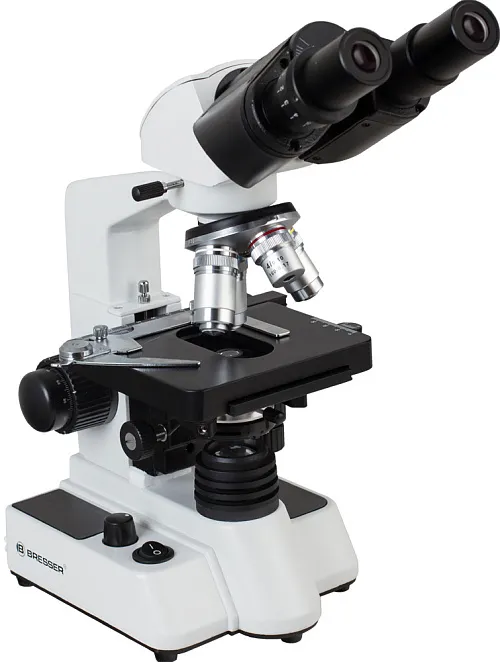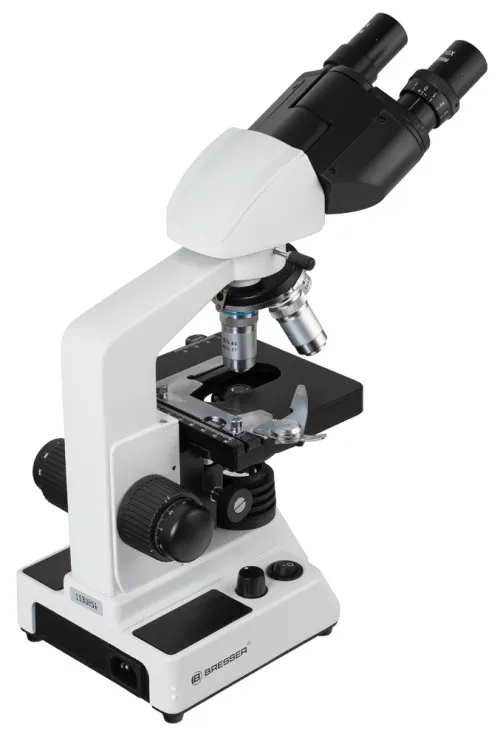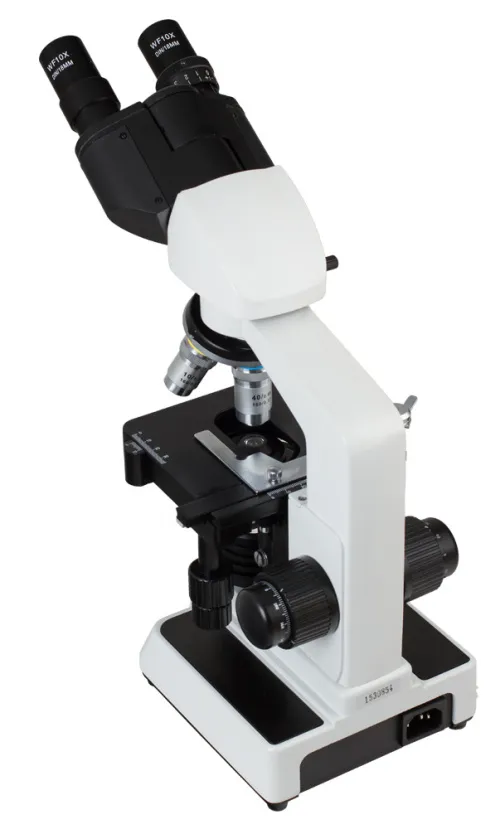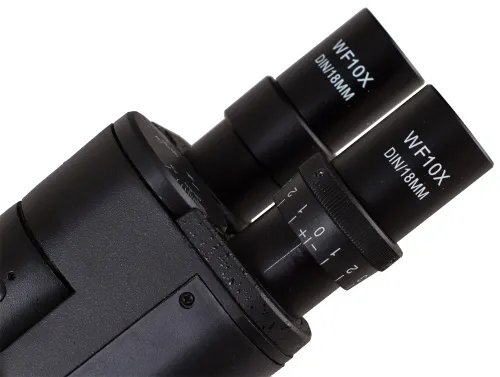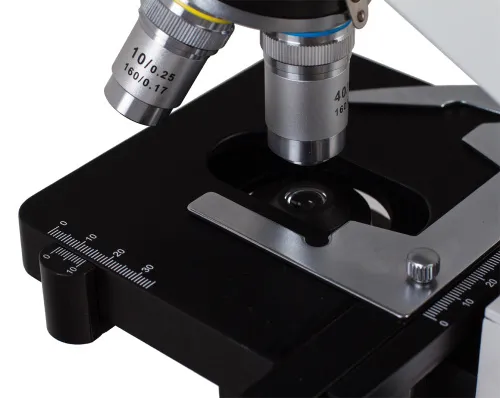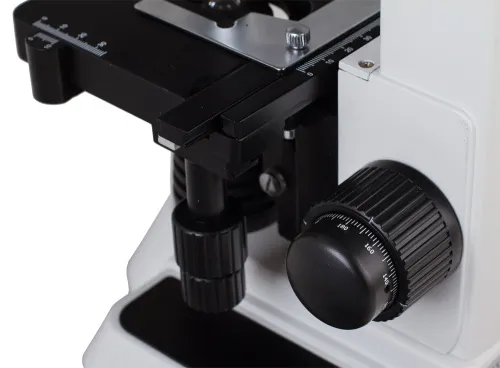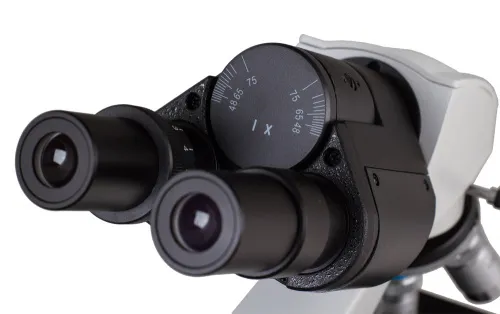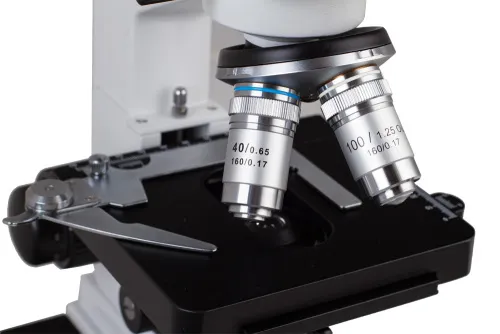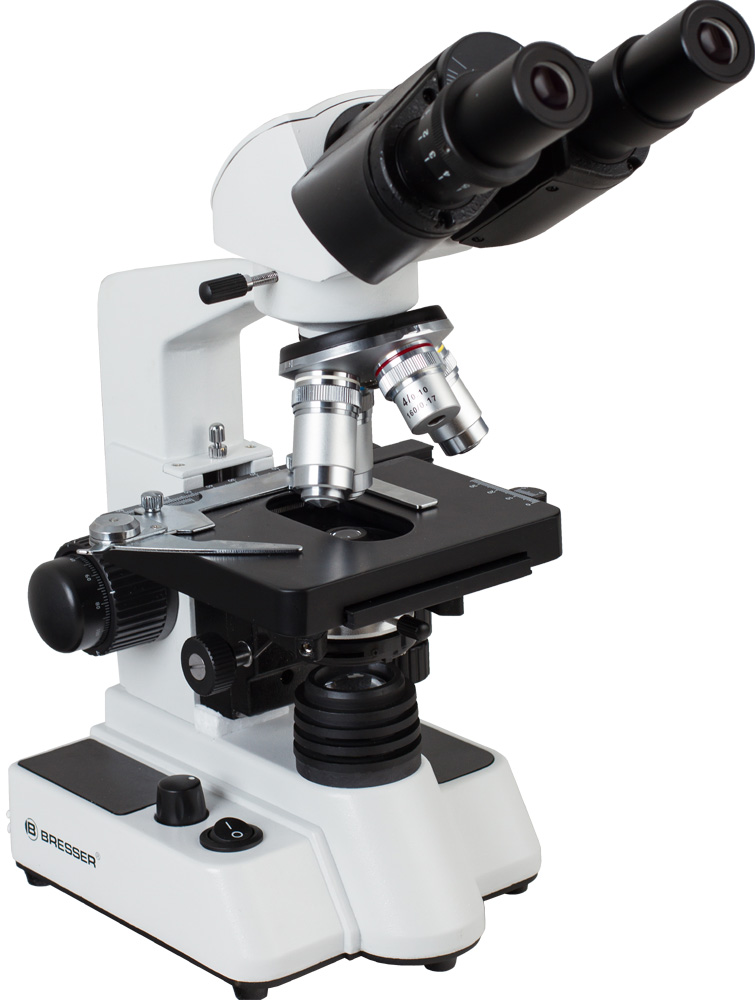Bresser Researcher Bino Microscope
Binocular biological microscope
| Product ID | 62566 |
| Brand | Bresser GmbH, Germany |
| Warranty | 2 years |
| EAN | 4007922150635 |
| Package size (LxWxH) | 46x30x22 cm |
| Shipping Weight | 4.686 kg |
The Bresser Researcher Bino is a professional binocular microscope with transmitted illumination, brilliant optics, and a durable metal body. It is perfect for use in biology and medicine, as well as for educational purposes. The comfortable binocular head can be individually adjusted according to the observer's needs. The turret is fitted with four objective lenses that offer magnifications from 40x to 1000x. Thanks to the included 100x lens, the oil immersion technique can be used. A stage with Vernier scales and coarse and fine adjustment knobs allows fixing two samples at once and ensures the most accurate positioning of the object under the objective.
Powerful LED and Abbe condenser with iris diaphragm guarantee perfect illumination of the observed object. This instrument is powered by AC mains. The microscope can be additionally equipped with a wide range of accessories included in the kit. Carrying case is also included.
Features:
- Microscope for educational and professional purposes
- Coaxial focus with fine adjustmenton
- The practical shape and position of the handle ensures more comfortable use
- Brightness adjustment
- Diopter adjustment
- Stage with Vernier scales
- Revolving nosepiece with 4 objectives
The set includes:
- Bresser Researcher Bino Microscope
- 2 eyepieces
- 4 lenses
- Blue filter
- Immersion oil
- AC adapter
- Pouch
- User manual
| Product ID | 62566 |
| Brand | Bresser GmbH, Germany |
| Warranty | 2 years |
| EAN | 4007922150635 |
| Package size (LxWxH) | 46x30x22 cm |
| Shipping Weight | 4.686 kg |
| Type | biological, light/optical |
| Microscope head type | binocular |
| Head inclination angle | 30 ° |
| Magnification, x | 40 — 1000 |
| Eyepiece tube diameter, mm | 23.2 |
| Eyepieces | 10x |
| Objectives | 4x/0.1; 10x/0.25; 40x/0.65; 100x/1.25 (immersion) |
| Revolving nosepiece | for 4 objectives |
| Interpupillary distance, mm | 53 — 75 |
| Eyepiece diopter adjustment, diopters | ±5 |
| Condenser | Abbe |
| Diaphragm | iris |
| Focus | coarse and fine |
| Body | metal |
| Illumination | LED |
| Brightness adjustment | ✓ |
| Power supply | 220–240V |
| Adapter | AC adapter |
| Optical scheme | achromat |
| Application | laboratory/medical |
| Illumination location | lower |
| Research method | bright field |
| Pouch/case/bag in set | dust cover |
We have gathered answers to the most frequently asked questions to help you sort things out
Find out why studying eyes under a microscope is entertaining; how insects’ and arachnids’ eyes differ and what the best way is to observe such an interesting specimen
Read this review to learn how to observe human hair, what different hair looks like under a microscope and what magnification is required for observations
Learn what a numerical aperture is and how to choose a suitable objective lens for your microscope here
Learn what a spider looks like under microscope, when the best time is to take photos of it, how to study it properly at magnification and more interesting facts about observing insects and arachnids
This review for beginner explorers of the micro world introduces you to the optical, illuminating and mechanical parts of a microscope and their functions
Short article about Paramecium caudatum - a microorganism that is interesting to observe through any microscope

